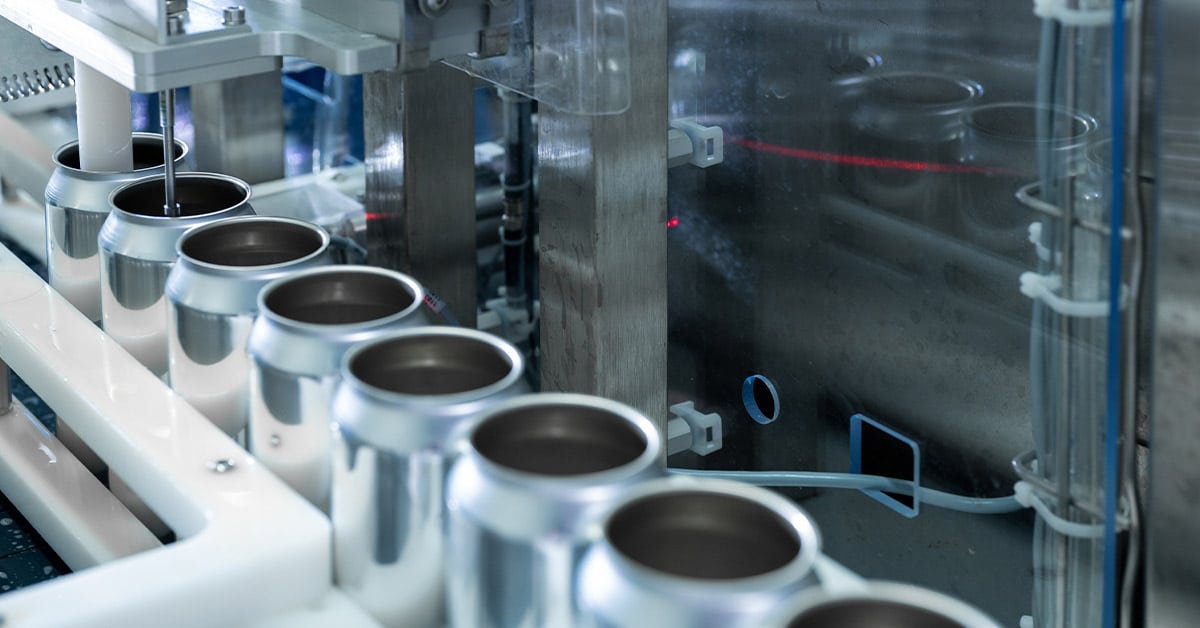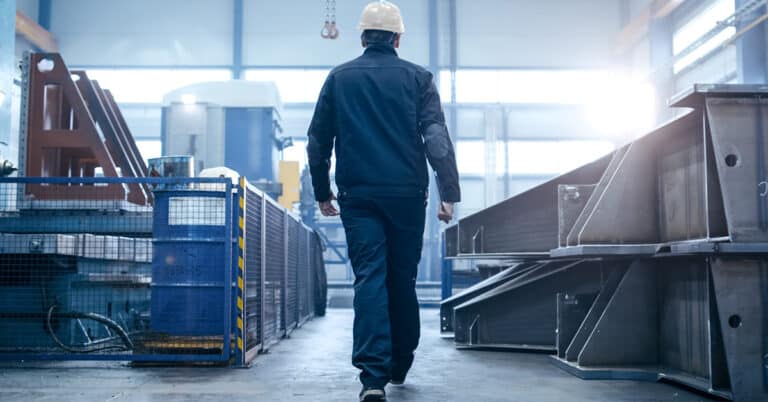Waste in manufacturing is expensive — both financially and environmentally. U.S. manufacturers lose an estimated $50 billion each year due to unplanned downtime alone, much of it avoidable. Predictive maintenance is a powerful solution that minimizes waste, improves uptime, and supports sustainable, lean manufacturing practices.
Predictive maintenance reduces waste not only by preventing failures but by improving overall process efficiency. It optimizes the use of labor, equipment, and materials while enhancing safety and sustainability. By enabling condition-based decision-making, predictive maintenance minimizes unnecessary interventions, reduces overuse of resources like lubricants and energy, and ensures each asset contributes maximum value throughout the manufacturing process.
From increasing equipment availability to shrinking carbon footprints, predictive maintenance is an essential strategy for modern industrial operations. It aligns closely with lean manufacturing and green manufacturing goals, which both seek to eliminate waste and maximize value.
Types of waste in industrial settings
Understanding the different types of manufacturing waste is essential for identifying how predictive maintenance can reduce or eliminate them. These include operational waste, material waste, and environmental waste — each presenting unique challenges and opportunities for improvement.
Operational waste
Any time machines aren’t running at full speed to produce what customers want, there is operational waste. The main culprits are inefficient processes and machine downtime.
Operational waste includes any inefficiencies that slow down or interrupt production. These stem from:
- Machine downtime: Unplanned downtime costs manufacturers an average of $260,000/hour according to Aberdeen Group. Predictive maintenance helps avoid this by addressing issues before failure.
- Inefficient processes: Slow cycle times, excessive energy use, and unnecessary operator intervention.
- Poor labor utilization: When machines stop, so does labor — leading to wage losses and missed deadlines.
- Low OEE (Overall Equipment Effectiveness): Suboptimal performance and availability metrics can reflect wasteful production setups.
OEE is a key indicator of operational efficiency in manufacturing. A low OEE score typically reflects a combination of equipment downtime, speed loss, and product defects — all of which are forms of waste that predictive maintenance helps to mitigate.
Material waste
This includes defective parts, rework, and overproduction — all of which consume excess materials:
- Industries most affected: Food processing, plastics, packaging, and precision manufacturing.
- Sources of waste: Setup scrap, test runs, offcuts, troubleshooting materials.
- Quality control risks: Asset performance issues can lead to dimensional or performance variation.
Material waste not only increases raw material costs but also contributes to storage, handling, and disposal expenses. Predictive maintenance plays a key role in reducing waste generation through process stabilization. In sectors like food processing, predictive maintenance can significantly reduce food waste by ensuring equipment maintains consistent temperature and timing, preventing spoilage and product loss.
Environmental waste
Unlike operational or material waste, environmental waste has broader impacts that extend beyond the factory floor — including regulatory compliance, public perception, and long-term sustainability goals. Environmental waste occurs when resources are overused or improperly disposed of:
- Examples: CO2 emissions from inefficient equipment, wasted water/coolants, excess packaging.
- Disposal costs: Hauling and treating hazardous or excess material adds expense.
- Regulatory pressure: Many manufacturers must meet EPA and ISO 14001 standards for emissions and sustainability.
Environmental waste reduction is an important part of sustainable manufacturing. By improving the energy efficiency and reliability of industrial assets, predictive maintenance reduces the environmental burden of the manufacturing process and helps companies meet emissions targets more effectively. For more, explore our guide on green manufacturing.
How predictive maintenance reduces operational waste
Predictive maintenance (PdM) technologies are designed to address inefficiencies that negatively affect uptime, labor productivity, and asset performance. By outfitting equipment with predictive maintenance sensors that monitor machine health, it’s possible to anticipate failures and schedule work just before this happens. This reduces operational waste by:
Improve equipment efficiency
Predictive maintenance uses real-time data to detect wear or inefficiencies before they escalate:
- Sensors track: Vibration, temperature, oil condition, and more.
- MTBF (Mean Time Between Failure) improves through early intervention.
- Energy savings: Efficient equipment uses less power per unit output.
- Improved cycle times: Machines stay within optimal parameters, minimizing slowdowns.
Learn more about MTBF.
Minimize downtime
Unplanned downtime is one of the costliest types of operational waste. Every minute of unplanned downtime compounds production losses, delays order fulfillment, and inflates operating costs — especially when labor and utilities remain active without output.
PdM boosts planned/unplanned ratios by:
- Identifying early warning signs.
- Allowing scheduled intervention during off-hours.
- Avoiding cascade failures that disrupt upstream/downstream processes.
- Reducing reliance on reactive maintenance, which often leads to resource strain and emergency spending.
These hidden and cascading costs are why downtime remains a top KPI for operational efficiency in the manufacturing process, making it crucial to grasp the total cost of machine downtime.
Optimize maintenance planning
By shifting from fixed schedules to condition-based maintenance:
- Technicians are better utilized and experience fewer scheduling conflicts.
- Maintenance activity becomes more targeted, minimizing redundant inspections.
- Less inventory waste: Fewer emergency parts orders, better forecasting.
- Improved coordination between operations and maintenance teams.
This enables continuous improvement of the maintenance team and schedules. Over time, these improvements not only reduce maintenance costs but also enhance long-term asset performance, helping teams move from reactive to predictive strategies.
How predictive maintenance reduces material waste
Machine condition has a direct impact on product quality and process performance. Predictive maintenance helps reduce material waste by ensuring machines operate within precise specifications.
- Defects and rework: Arise from bearing wear, thermal drift, sensor misalignment, or filter clogs. Even small deviations can create unusable outputs.
- Real-time PdM data: Helps detect these subtle changes before they affect quality. Alerts prompt early intervention.
- Process optimization: Insights enable better control of curing, mixing, drying, and assembly sequences.
Industries that are highly sensitive to quality variation, such as medical devices and aerospace, can benefit immensely from predictive analytics. In such applications, even minor machine deviations can compromise regulatory compliance or require full product recalls — making early detection essential for reducing material waste and protecting brand integrity.
It also helps extend machine lifespan, reducing the need to prematurely replace large equipment — further reducing waste generation and capital expenditures. This contributes to a more sustainable manufacturing process by conserving raw materials, limiting landfill contributions, and improving the overall efficiency of production assets.
Environmental benefits of predictive maintenance
Predictive maintenance is a key element in moving toward “green manufacturing”.
Beyond operational and material gains, predictive maintenance plays a pivotal role in helping manufacturers meet their environmental and sustainability objectives. Predictive maintenance supports sustainable manufacturing by:
- Reducing emissions from malfunctioning or inefficient machinery.
- Lowering energy consumption via optimized equipment operation.
- Decreasing lubricant/coolant waste by reducing overuse and leaks.
- Minimizing hazardous disposal through better resource control.
- Enabling proactive compliance with environmental regulations.
Companies adopting PdM often see carbon footprint improvements of 10–20%. These gains support ESG objectives and investor priorities. Predictive maintenance also contributes to lean manufacturing efforts by targeting waste in all its forms — motion, waiting, overprocessing, and more.
Predictive maintenance technologies also enable better tracking of sustainability metrics, giving sustainability officers and environmental analysts the data they need to report on energy efficiency, waste reduction strategies, and carbon output. These insights also support continuous improvement initiatives by highlighting where sustainability efforts are paying off — and where further efficiencies can be gained.
As manufacturers seek to align environmental stewardship with profitability, predictive maintenance offers a scalable solution that reinforces both missions. Learn more about how PdM fits into a holistic lean manufacturing framework.
Implementing predictive maintenance to reduce waste
While the benefits of predictive maintenance are clear, successful implementation requires a phased approach that aligns with your operational goals and data maturity. Start your predictive maintenance strategy with a structured roadmap:
- Assess current data capabilities: Inventory sensors, logs, CMMS data. Many facilities already collect some data but lack the tools to use it effectively.
- Review maintenance history and failure modes: Pinpoint recurring issues. Use Pareto analysis to identify high-impact equipment.
- Start with a high-impact pilot area: Focus on high downtime or high-value assets. This builds internal buy-in.
- Deploy PdM tools: Install or activate sensors (vibration, thermal, oil). Evaluate IoT platforms that integrate with your existing systems.
- Analyze with AI or CMMS integration: Turn data into insights. AI-powered predictive maintenance enables more accurate forecasting and decision-making.
- Iterate and scale: Expand based on pilot learnings. Document results and ROI to support broader rollouts.
Most manufacturers see ROI within 6–12 months. PdM enables teams to shift from reactive maintenance to preventive maintenance, reducing both maintenance costs and risk of failure.
Organizations ready to take the next step can start small and scale strategically using a proven framework. For more insights, learn about starting a predictive maintenance pilot program.
ATS helps manufacturers implement predictive maintenance
ATS provides comprehensive support for predictive maintenance programs, including:
- Sensor deployment & monitoring expertise
- Custom PdM implementation roadmaps
- Integration with existing EAM/CMMS systems
- Support for ESG and sustainability initiatives
- Expertise across multiple industries
- Dedicated account teams for ongoing improvement
We help reduce adoption friction and guide clients through every stage of a successful predictive maintenance rollout. Whether you’re just getting started or looking to scale your existing PdM program, ATS offers the technical knowledge, tools, and support to make it happen.
Predictive maintenance is the future of lean, sustainable manufacturing. Contact us to learn how ATS can help your facility reduce waste, improve uptime, and operate more efficiently.
References
ISO 14001 Environmental Management
International Organization for Standardization. (2015). ISO 14001:2015 – Environmental management systems — Requirements with guidance for use. ISO. https://www.iso.org/standard/60857.html
Pareto Analysis in Maintenance
Armstrong, D. (n.d.). The power of Pareto analysis in maintenance. Reliable Plant. https://www.reliableplant.com/Read/30572/pareto-analysis-maintenance
The True Cost of Downtime (Aberdeen Group via IndustryWeek)
The original article does not provide a clear publication date or author, but you can cite it as follows:
IndustryWeek. (n.d.). The true cost of downtime. https://www.industryweek.com/operations/asset-management/article/22025256/the-true-cost-of-downtime






